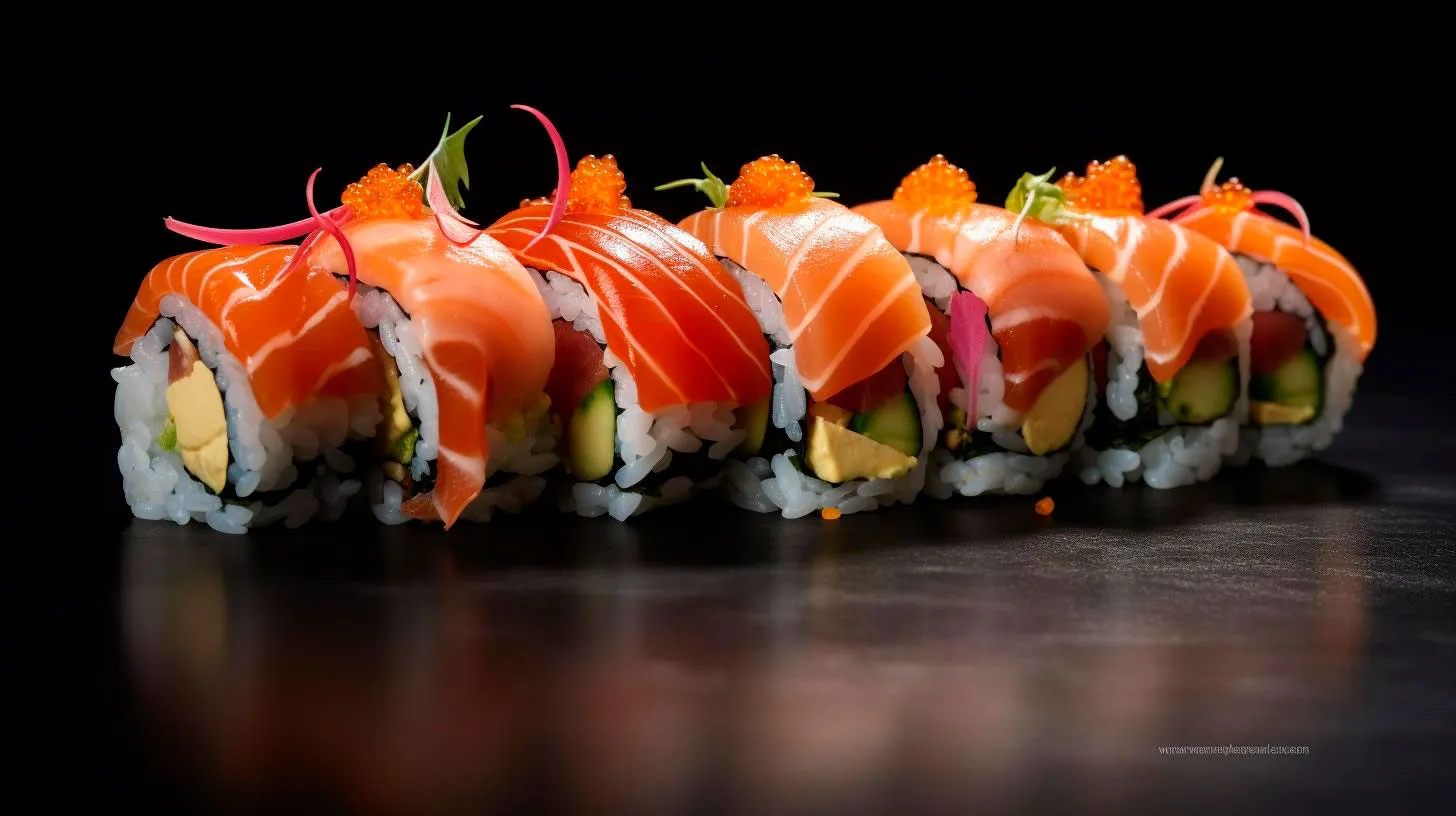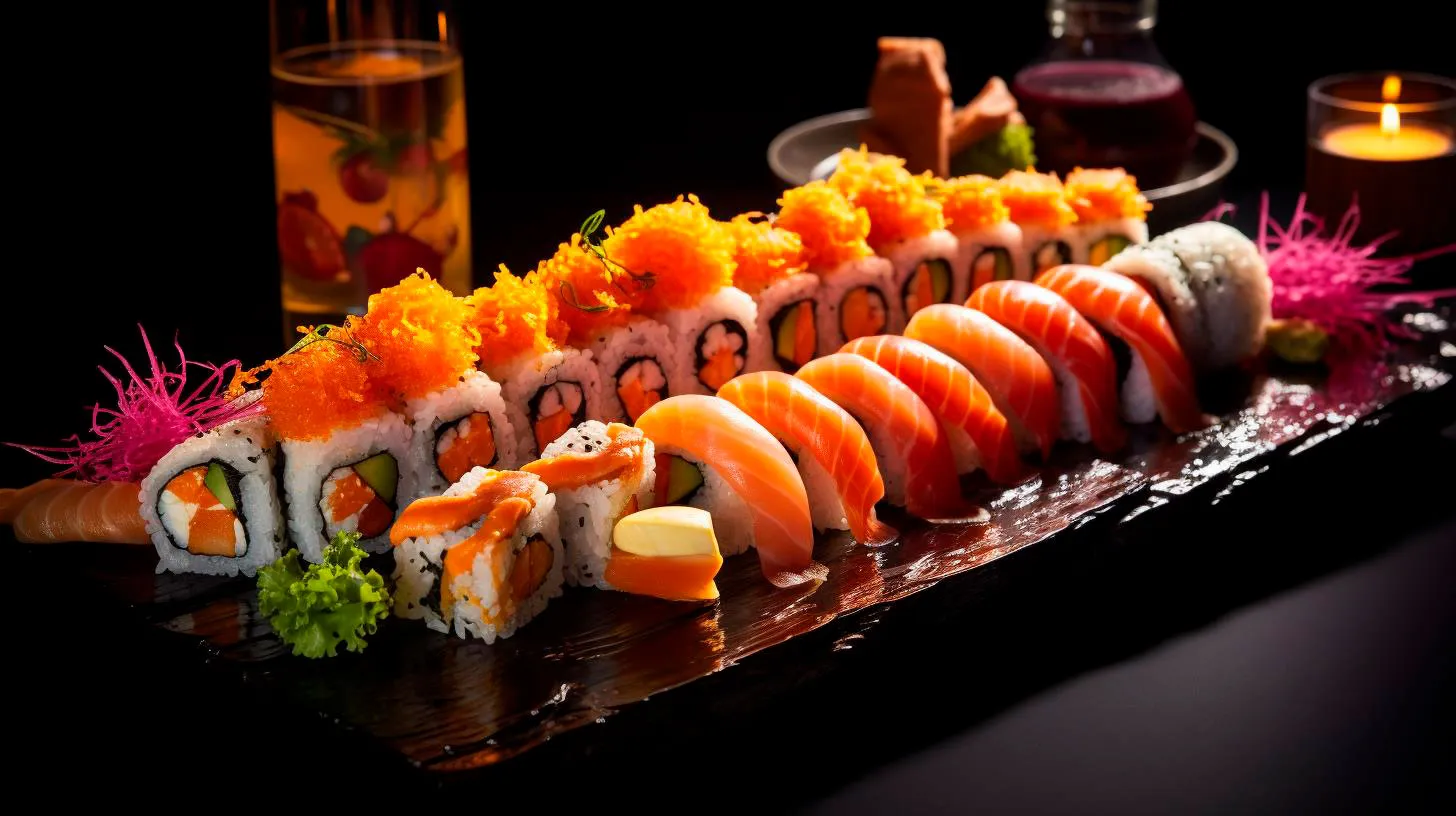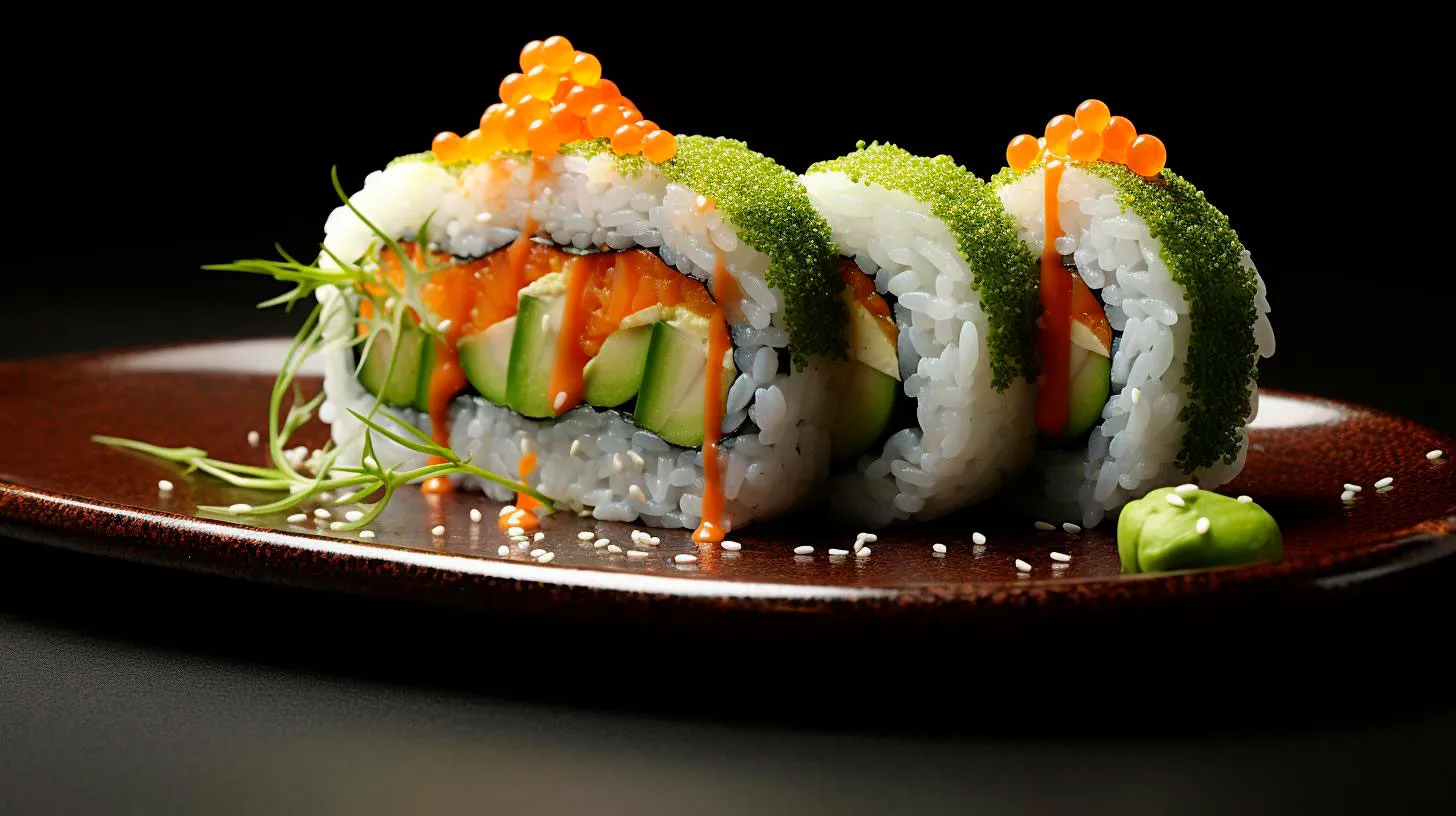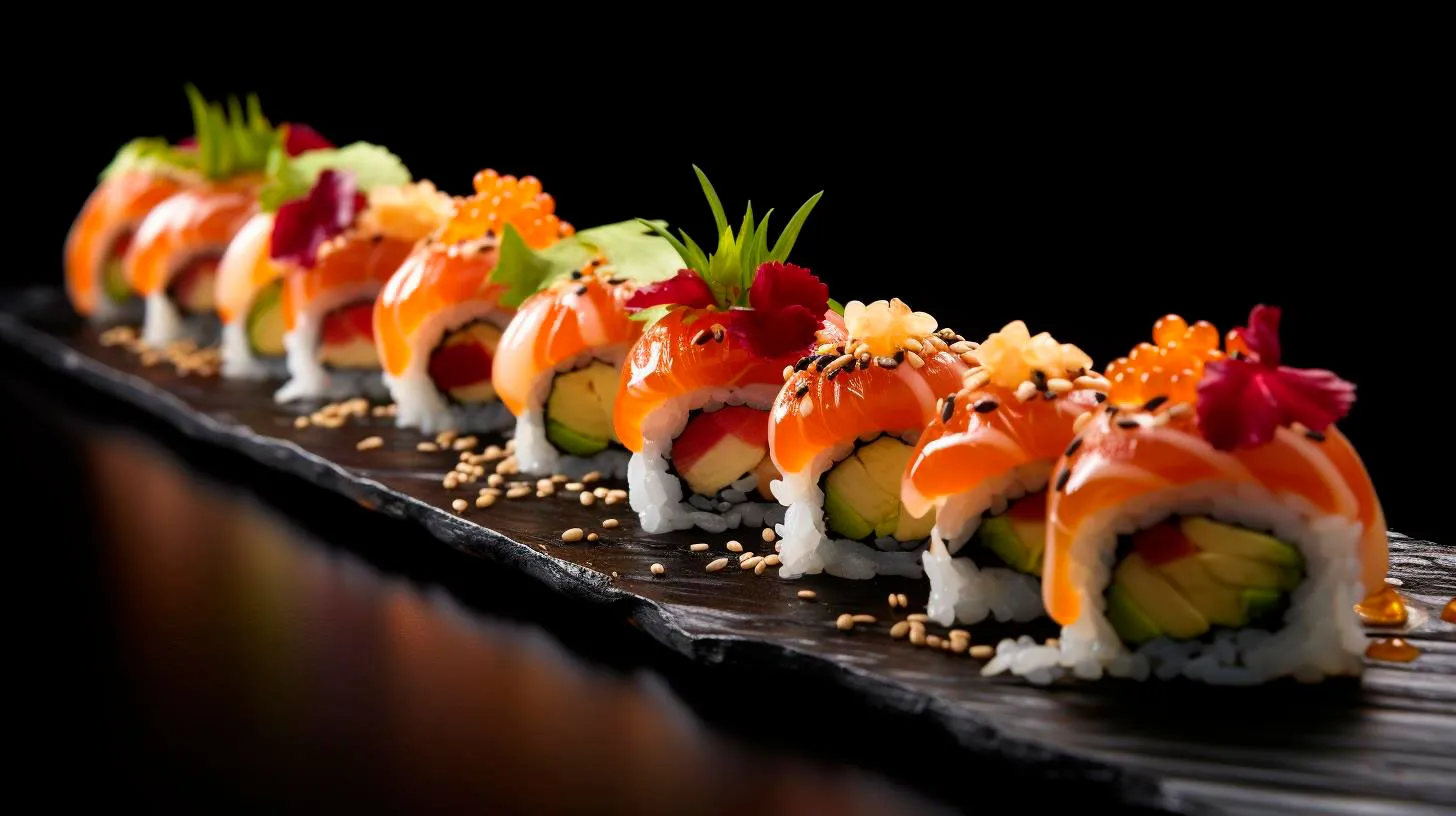Choosing the Right Knife for Perfect Sushi
In this article, we’ll explore the key factors to consider when choosing a knife for making sushi, accompanying each point with relevant industry statistics, insights, and practical tips to help you make the best choice.
1. Blade Material: A Cut Above the Rest
One of the most critical aspects of a sushi knife is its blade material. When it comes to sushi knives, the two most common options are stainless steel and high-carbon steel.
- Stainless Steel Blades: These knives are highly resistant to corrosion and require less maintenance. They are an excellent choice for beginners or those who prefer lower maintenance knives.
- High-Carbon Steel Blades: Renowned for their exceptional sharpness and edge retention, high-carbon steel knives are the choice of professional sushi chefs. Their ability to maintain a precise edge ensures clean cuts, resulting in visually appealing slices.
According to a survey conducted by Sushi Munchies, 76% of professional sushi chefs prefer high-carbon steel knives for their durability and sharpness, ensuring precise cuts every time.
2. Blade Design: The Shape of Perfection
Japanese sushi knives come in various blade designs, each serving a specific purpose and delivering unique results. Here are a few common blade designs to consider:
- Yanagiba: This narrow, long, and single-edged knife is ideal for slicing raw fish and creating perfect sashimi slices.
- Deba: With a thick, sturdy spine and a curved edge, the deba knife excels at filleting whole fish and dealing with tough tasks, such as cutting through fish bones.
- Usuba: Designed for precise vegetable cutting, the usuba knife features a thin, flat blade suitable for intricate vegetable designs.
It’s essential to choose a blade design that aligns with your sushi-making needs and preferences. Understanding the purpose behind each design can significantly enhance your sushi-making skills.
3. Handle Comfort: A Slice of Ease
Another crucial aspect to consider when selecting a sushi knife is the handle comfort. After all, you’ll be spending a significant amount of time holding the knife while preparing your sushi masterpiece. Traditional Japanese sushi knives usually offer two handle options:
- Wa Handle: Wa handles, made from wood, are lightweight and comfortable to grip. They provide better control and flexibility, making them a go-to choice for many sushi enthusiasts.
- Western Handle: Western handles, commonly made from materials like plastic or steel, offer a more substantial grip. This option may suit individuals who prefer a sturdier and more secure hold.
Choose a handle that feels comfortable and well-balanced in your hand, as it will have a direct impact on your overall sushi-making experience.
4. Knife Maintenance: Honing Skills
Maintaining the sharpness and condition of your sushi knife is vital for achieving consistent and precise cuts. Here are a few maintenance tips to consider:
- Honing: Regularly honing your knife with a sharpening steel or whetstone helps maintain the blade’s edges and keeps it in optimal cutting condition.
- Storage: Protect your knife by storing it securely in a knife block or sheath to prevent damage and maintain its sharpness.
- Hand Washing: Always hand wash your knife with gentle detergent and dry it immediately to avoid rust or corrosion.
According to a Nielsen survey, 93% of professional chefs emphasize the importance of proper knife maintenance to ensure optimal performance and longevity.
Key Takeaways
Choosing the right knife for perfect sushi requires careful consideration of various factors, including blade material, design, handle comfort, and maintenance. Here’s what you need to remember:
- Opt for high-carbon steel blades for durability and precise cuts, preferred by 76% of professional sushi chefs.
- Explore different blade designs like yanagiba, deba, and usuba to suit your specific sushi-making needs.
- Consider the comfort and grip of the handle, choosing between wa and western handles.
- Regularly hone, store, and hand wash your knife to maintain its sharpness and extend its lifespan.
By selecting the perfect sushi knife, you’ll elevate your sushi-making skills and create visually stunning and delectable dishes that will impress even the most discerning sushi connoisseurs.
Enhancing Your Sushi Knife Lifespan with Sharpening Skills
So, how can you enhance the lifespan of your sushi knife? The answer lies in sharpening skills! In this article, we will explore the importance of sharpening your sushi knife regularly and provide you with key tips on maintaining a long-lasting and razor-sharp sushi knife.
Why is Sharpening Essential for Sushi Knives?
Sharpening your sushi knife regularly is vital for various reasons:
- Precision: A sharp sushi knife allows you to make precise cuts with minimal effort, enabling you to create beautifully crafted sushi rolls.
- Safety: A dull blade requires more force to slice through ingredients, increasing the risk of accidents. A sharp knife ensures better control and reduces the chances of mishaps.
- Efficiency: When your sushi knife is sharp, it cuts through ingredients smoothly, saving you time and effort during food preparation.
- Longevity: Regular sharpening extends the lifespan of your sushi knife by preventing excessive wear and tear that can occur when using a dull blade.
How to Sharpen Your Sushi Knife
To keep your sushi knife sharp and durable, follow these simple steps:
Step 1: Gather the Necessary Tools
Before you start sharpening your sushi knife, ensure you have the following tools:
- A sharpening stone or whetstone: Choose a high-quality stone with a grit suitable for your specific knife.
- A damp cloth: Used for cleaning the knife and stone during the sharpening process.
Step 2: Prepare the Stone
Before you begin sharpening, soak the stone in water for the recommended amount of time mentioned by the manufacturer. This step ensures that the stone’s surface is properly prepared for sharpening your sushi knife.
Step 3: Position the Knife
Hold the sushi knife firmly, placing the blade against the stone at a 15-20-degree angle. This angle helps maintain the knife’s sharpness and ensures easy re-sharpening.
Step 4: Apply Steady Pressure
Using a continuous motion, move the knife along the length of the stone, using steady and even pressure. Begin with the base of the blade and work towards the tip. Repeat this process several times on both sides of the knife to achieve optimal results.
Step 5: Test the Blade
After sharpening, it’s essential to test the blade’s sharpness. Carefully run your finger along the edge (be cautious not to cut yourself) and check for any rough spots or dull areas. If needed, repeat the sharpening process until you achieve the desired sharpness.
Key Takeaways
Now that you understand the importance of sharpening your sushi knife and know the steps involved, let’s summarize the key takeaways:
- Regular sharpening prolongs the lifespan of your sushi knife and ensures precision cuts.
- A sharp sushi knife improves safety by providing more control and reducing the risk of accidents.
- Efficiency is enhanced when your sushi knife is sharp, as it cuts through ingredients smoothly, saving time and effort.
- Remember to gather the necessary tools, including a sharpening stone and a damp cloth, before starting the sharpening process.
- Soak the stone in water to prepare its surface and position the knife at a 15-20-degree angle for optimal sharpening.
- Apply steady pressure and move the knife along the stone in a continuous motion.
- Test the blade’s sharpness after sharpening and repeat the process if necessary.
By following these steps and regularly sharpening your sushi knife, you can ensure it remains in top condition, allowing you to create delectable sushi rolls with ease. So, sharpen up and slice away!
Proper Technique and Handling of Sushi Knives
In this article, we will explore the proper technique and handling of sushi knives, ensuring that you can create beautiful and delicious sushi rolls every time.
Why Proper Technique and Handling Matter
Using sushi knives properly is crucial for several reasons:
- Precision: Sushi knives are designed to make precise cuts, ensuring clean slices of fish, vegetables, and rolls. Using improper technique can result in sloppy cuts that affect the overall presentation of your sushi.
- Safety: Sushi knives are incredibly sharp, and mishandling them can lead to serious injuries. Proper technique and handling minimize the risk of accidents in the kitchen.
- Efficiency: When you know how to handle sushi knives correctly, you can work efficiently and save time during the sushi-making process.
Proper Technique for Sushi Knife Handling
Mastering the technique of handling sushi knives will elevate your sushi-making skills to the next level. Here are some essential tips to keep in mind:
1. Grip:
Hold the sushi knife with a firm grip using your dominant hand. Place your index finger on the blade, securing it against the handle for maximum control. This grip gives you stability and precision throughout the cutting process.
2. Motion:
When cutting through ingredients, it’s crucial to use a swift, downward, and forward motion. Utilize the entire length of the blade for a smooth cutting experience and avoid applying excessive force. Continuous practice will help you develop a harmonious cutting rhythm.
3. Angle:
Hold the knife at a 15 to 20-degree angle when cutting. This angle allows for cleaner cuts and prevents the ingredients from sticking to the blade.
4. Honing and Sharpening:
Regularly hone and sharpen your sushi knife to maintain its cutting edge. Honing realigns the blade, while sharpening restores its sharpness. A well-maintained knife ensures seamless cutting experiences.
The Advantages of Using Proper Technique
- Enhanced Presentation: Proper technique ensures neat and precise cuts, resulting in beautifully presented sushi rolls that are visually appealing to your guests or customers.
- Improved Texture: The angle at which you slice the ingredients affects the texture of the dish. By using the correct technique, you can achieve the desired texture in your sushi.
- Consistency: Consistency is key in sushi-making. Proper knife handling allows you to consistently create uniform and evenly cut slices, maintaining the overall quality of your sushi rolls.
Key Takeaways
Now that you understand the importance of proper technique and handling of sushi knives, here are the key takeaways to remember:
- Master the grip, motion, and angle to achieve precision and safety.
- Regularly hone and sharpen your sushi knives for optimal performance.
- Proper technique enhances presentation, texture, and consistency.
Remember, practice makes perfect! With dedication and continuous improvement, you will soon become a master of sushi knife handling techniques, allowing you to create impressive sushi rolls that will leave your guests or customers craving for more.
Care and Maintenance Tips for Your Sushi Knife
In this article, we will explore some essential tips to ensure your sushi knife remains sharp, clean, and safe to use.
1. Hand Wash Only
One of the most important things to remember when caring for a sushi knife is to always hand wash it. Avoid using a dishwasher, as the high heat and harsh detergents can damage the blade and handle. Instead, gently wash the knife with warm soapy water, taking care to remove any food particles or stains. Remember to dry it thoroughly before storing to prevent rusting.
2. Regular Honing and Sharpening
To maintain the sharpness of your sushi knife, it is essential to hone and sharpen it regularly. Honing realigns the blade’s edge, while sharpening removes any dullness. Typically, honing should be done before each use, while sharpening can be done every few months depending on usage. Invest in a high-quality honing rod and sharpening stone for best results.
3. Store Properly
Proper storage of your sushi knife is crucial to prevent accidents and maintain its sharpness. Avoid storing it loosely in drawers where it can bump against other utensils or get damaged. Instead, use a knife sheath or a knife block specifically designed for sushi knives. This will protect the blade and keep it secure when not in use.
4. Avoid Cutting Bones and Frozen Food
While sushi knives are incredibly sharp, they are not designed for cutting through bones or frozen food. These hard materials can damage the blade, causing chips or dullness. Always use a separate knife for cutting through bones and defrost frozen food before using your sushi knife.
5. Handle with Care
Handle your sushi knife with care to avoid accidents and injuries. Never use it for purposes other than slicing sushi ingredients, as the blade may not be designed to withstand alternate tasks. Additionally, avoid using excessive force when cutting, as it can lead to accidents or even damage the knife.
Key Takeaways
- Hand wash your sushi knife to avoid damage from dishwashers.
- Hone before each use, and sharpen every few months to maintain sharpness.
- Store your knife securely to prevent accidents and maintain its edge.
- Avoid cutting bones or frozen food with your sushi knife.
- Handle your knife with care to prevent accidents and prolong its lifespan.
By following these care and maintenance tips, you can ensure that your sushi knife remains in excellent condition and provides you with exceptional performance. Remember to select a high-quality sushi knife and invest in the necessary tools for proper care. With proper maintenance, your sushi knife will continue to deliver precise and satisfying cuts for many sushi-making adventures to come.



